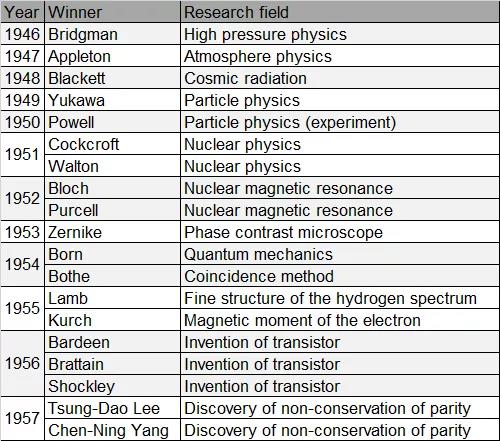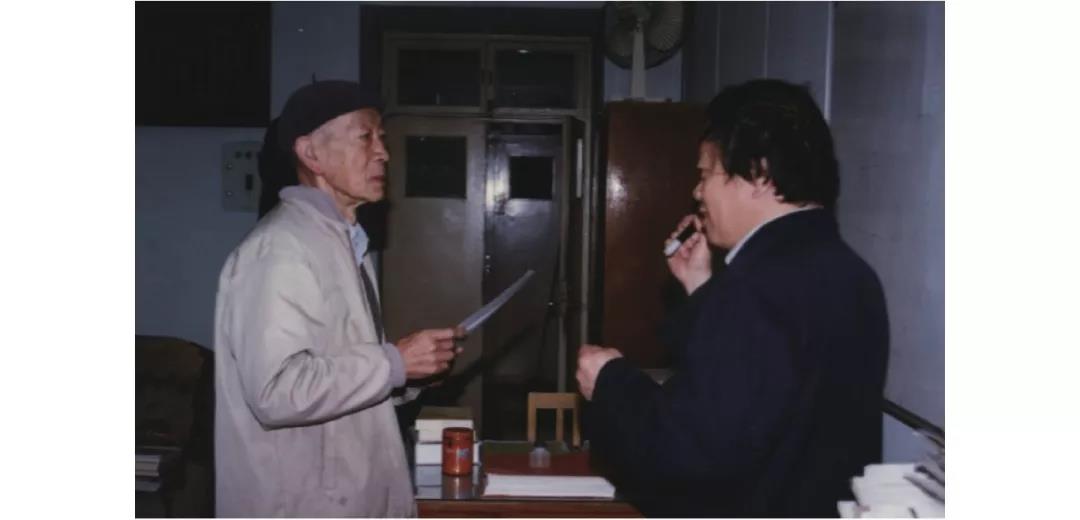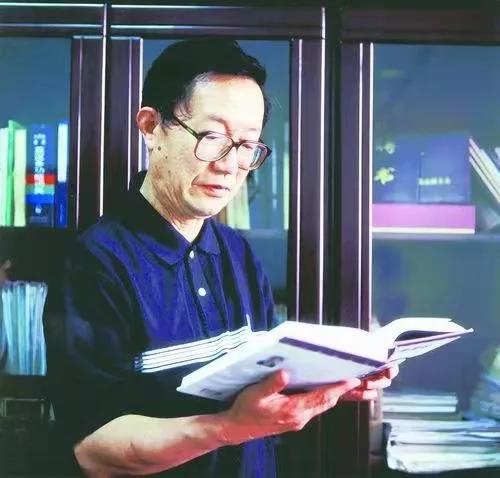黄昆先生是世界著名物理学家、中国固体物理和半导体物理学奠基人之一。他在固体物理领域取得了卓越的成就,并为我国培养了大批半导体科技人才。
在2019年第9期出版的《半导体学报》中,中国科学院半导体研究所夏建白院士撰写了Comments and Opinions文章《Major scientific accomplishments of Prof. Kun Huang》,详细介绍了黄先生在半导体科学五个领域的主要科学成就,并回顾了黄先生对科技工作者的谆谆教诲,以此纪念黄昆先生百年诞辰。
|
黄昆先生是世界著名物理学家、中国固体物理和半导体物理学奠基人之一。他在固体物理领域取得了卓越的成就,并为我国培养了大批半导体科技人才。
在2019年第9期出版的《半导体学报》中,中国科学院半导体研究所夏建白院士撰写了Comments and Opinions文章《Major scientific accomplishments of Prof. Kun Huang》,详细介绍了黄先生在半导体科学五个领域的主要科学成就,并回顾了黄先生对科技工作者的谆谆教诲,以此纪念黄昆先生百年诞辰。
Abstract: The 100th anniversary of the birth of Prof. Kun Huang is in this year. Prof. Huang is a paragon of the older generation of Chinese scientists. He had made great achievements in solid state physics. After the founding of the People’s Republic of China, he returned to China immediately, and devoted himself to education. He and Prof. Xide Xie initiated the research of semiconductors in China, and established the solid state physics major at Peking University, which has trained a large number of talents for China. In 1977, he became the director of the Institute of Semiconductors of the Chinese Academy of Sciences. Led by Prof. Huang, together with Prof. Shouwu Wang, Prof. Lanying Lin and Prof. Shoujue Wang, the semiconductor institute independently overcomes many difficulties and created a group of critical devices which were on international embargo but urgently needed by China. Furthermore, he also made new contributions in the field of semiconductor superlattices. Under his leadership, the State Key Laboratory of Semiconductor Superlattices became one of the internationally leading laboratories. The following are the major scientific contributions of Prof. Kun Huang. 1. A pioneer of solid state physics research Prof. Kun Huang started to study in the UK at the end of the World War II. At that time, the research on solid state physics just began. This can be revealed from the research fields of the laureates of the Nobel Prize in physics in the past years: Table 1. Summary of the Nobel Prize in physics during 1946 to 1957. It can be seen from the Table 1 that from 1946 to 1957, there was no research related to solid state physics awarded the Nobel Prize in Physics, indicating that there were only a few unfocused studies for some specific problems in solid state physics, but no systematic study was conducted. For example, Prof. Mott, who was the supervisor of Prof. Huang, studied the electronic process during the exposure of the photographic substrate, and wrote a book entitled "Electronic Processes in Ion Crystals". Prof. Huang was the first Chinese among the graduate students of Prof. Mott in Bristol after the World War II. Mott proposed two research topics. One is to calculate the energy of the small-angle grain boundary. The other one is the effect of the dissolved solute atoms to X-ray diffraction in dilute solid solution. Prof. Huang chose the second one because he preferred to study a systemic theory. The difference in the band gap between the dissolved atoms and the host causes the position of the atoms in the solid solution to deviate. This effect is similar as thermal vibration. Therefore, in addition to the X-ray diffraction pattern resulted from the average lattice constant, there is a distribution of diffuse scattering near the diffraction point. Kun Huang completed the theoretical work in 1947, but there was no experimental verification. 20 years later, the theory was finally confirmed by experiment. This method of X-ray scattering has now been used in detecting defects or impurities in crystals, called the Huang diffusion scattering (HDS). 2. The creator of the concept “polariton” When Kun Huang was a graduate student at the University of Bristol, he learned about a work done by Fröhlich and Mott, who tried to combine the microscopic model of optical vibration in crystals with the dielectric function. Thus he discussed this issue with Fröhlich during coffee break. Kun Huang felt that their microscopic model could not correctly describe the motion of charged particles in crystals. Because the particles are all charged, one should not only consider the interaction between positive and negative charge. The electric field resulted from the charged particles will induce polarization, leading to a re-distribution of charge and electric field. This is a self-consistent process. In the end, Kun Huang proposed a pair of phenomenological equations in 1950 which relate the macroscopic electric field E and the relative displacement u of the lattice ions to the dielectric polarization P of the crystal, and describe the long-wave optical vibration of the polar crystal. After more than 10 years since the first propose of these equations, the coupled vibration mode was confirmed in experiment, and was named “polariton”. This set of equations becomes the basis for studying the coupling of lattice vibration modes and electromagnetic waves in solids. People later discovered many new elementary excitations (excitons, magnetons, plasmons, etc.) coupled with electromagnetic waves. Polariton became a hot spot in the research of solid state physics during the 1960s. Kun Huang is generally recognized as the initiator of this concept. This set of equations is called the Huang equation. In conventional polar crystals, such as semiconductors, electron-lattice interactions are weak and can be treated as perturbation. However, in ionic crystals, such as sodium chloride, the electronic transition will cause relaxation of the surrounding atoms. That is to say, the configuration coordinates of the ground and excited electronic states are different. During the electronic transition process, multiple phonons will be emitted or absorbed, namely the multi-phonon transitions, so the perturbation theory is no longer applicable. Prof. Kun Huang discovered this problem when studying the optical spectrum of the F-center in ionic crystals. The F-center spectrum is produced by defects in ionic crystals, and the spectrum exhibits as a very wide band, rather than a narrow line which is observed in conventional crystals. Therefore, he realized that the electronic transition of the defect center (F-center) is accompanied by a re-arrangement of the surrounding atoms, that is, lattice relaxation. From a mathematical point of view, he proposed that under two different configuration coordinates, the orthogonality of the phonon wave function is no longer satisfied, so any change in the number of phonons is possible. On this basis, Kun Huang developed the theory of multi-phonon transition. At the same time, he developed the theory of non-radiative transition, in which the emission or absorption of phonons compensates for the energy of the electronic transition. This theory was completed by Prof. Kun Huang and his wife, Ms. Avril Rhys. They introduced an important parameter to describe the number of phonons, called the Huang-Rhys factor. The book "Dynamical theory of crystal lattices" co-authored by Prof. Kun Huang and Prof. Max Born becomes the "Bible" of lattice dynamics theory. After completing his doctoral thesis, Prof. Kun Huang had a half-year visit to Professor Born at the University of Edinburgh. In their first meeting, Born handed Kun Huang a very incomplete manuscript about lattice dynamics. Born proposed that Kun Huang cooperate with him to complete the book, and it took Kun Huang three years to finish this work. In order to complete the book, Kun Huang studied the ten invariant conditions of the force constant. As Born emphasized in the preface, the book is not a compilation of published results, but a reorganization. The role of Kun Huang in writing this book can be learned in the preface written by Prof. Born: “the final form and the wording of this book are essentially due to Dr. Huang”; “Dr. Huang, who is convinced that science’s main purpose is its social usefulness, found my plan of an abstract, deductive presentation not to his taste. Therefore, he has written some introductory chapters of a more elementary character which should be easy to understand, and which leads slowly up to the general theory of the second half of the book. He has also rewritten my original text, generalizing it in many ways, and adding new sections.” So the book clearly has a " Kun Huang style" instead of the original "Born style." Figure 1. (Color online) Covers of the book "Dynamical theory of crystal lattices" co-authored by Prof. Kun Huang and Prof. Max Born, and the Chinese version. 5. The phonon mode and exciton state in semiconductor superlattices The achievements include: (1) Developed a plane wave expansion method to calculate the hole subband in superlattices. (2) On this basis, a strict four-component exciton state theory has been developed. (3) The most successful one is the development of the theory of optical vibration mode in superlattices, later known as the Huang-Zhu model. At that time, one could derive superlattice optical modes by phenomenological treatments based on dielectric continuous approximation, while direct lattice dynamics calculations required a large amount of computation. There are great differences in the boundary conditions between the two materials in superlattices for the optical vibration mode: one is the electrostatic boundary condition and the other is the mechanical boundary condition. Kun Huang and Bangfen Zhu proposed a dipole oscillator model. This model has many flexible and highly desirable features to describe the optical modes in superlattices, and the computational cost is greatly reduced compared with the actual microscopic model. On the other hand, it is compatible with the dielectric continuous model under the long-wave limit. The results from this model clarify a series of fundamental problems associated to optical modes in superlattices. The Huang-Zhu model is closely related to the theoretical explanation of the experimental work of Raman scattering. In this process, Kun Huang found that this kind of work is very confusing (baffling). For this reason, he and Bangfen Zhu jointly developed a detailed microscopic theory of the Raman scattering of optical phonon in superlattices. Figure 2. (Color online) Prof. Kun Huang (left) and Prof. Bangfen Zhu. Today we commemorate the 100th anniversary of the birth of Prof. Kun Huang. We should learn from his words: (1) The pursuit of science is very important for those who are interested in scientific research. The country has always hoped that we must improve the quality of our basic research and we must occupy an important place in the international arena. To do this, the people who work in this area must first have the spirit of persistent pursuit of science. Without such a state of mind, one is not well qualified for basic scientific research. (2) It is very important to choose the research direction. Kun Huang said: "It is fortunate to choose Mott as a supervisor and solid state physics as my research direction. As a discipline, solid state physics has just established in the 1940s. It is regarded as the most important new discipline of physics in the 20th century given its great developments. I was very fortunate to enter this great field at that time. In addition, the style of Mott to do research influenced me a lot. After knowing and getting in touch with him, I have further realized that the pursuit of science is gradually developed through solving specific scientific problems one by one." "Prof. Mott does not have very broad research interests, but he asks you to concentrate on solving the problems you face. Whether you can concentrate or not is the key to your ability to do research." (3) Regarding to the issue of becoming talent, based on my (Kun Huang’s) experience, I realized two facts: one is that we need to learn knowledge, and the other is that we need to create knowledge. For scientists, the most important thing is creating knowledge. As for learning, my experience is that it is not always the more the better and the deeper the better. The knowledge one gain should serve to application, and should match one’s ability to use it. There are three important abilities. One is being good at raising questions, especially those with great scientific significance. Another one is being good at proposing models and methods to solve problems. The last one is being good at making the most important and significant conclusions.

3. For the first time, proposed a rigorous theory to deal with electron-lattice interactions in crystals without the use of perturbation theory
4. Systematized the theory of lattice dynamics



夏建白院士,半导体物理专家。中国科学院半导体研究所研究员。2001年当选为中国科学院院士。
点击阅读夏建白院士文章:
Major scientific accomplishments of Prof. Kun Huang
Jianbai Xia
J. Semicond. 2019, 40(9), 090301
doi: 10.1088/1674-4926/40/9/090301
“纪念黄昆先生百年诞辰”专刊 《半导体学报》组织了一期“纪念黄昆先生百年诞辰”专刊。该专刊包括4篇综述文章和4篇研究论文,已于2019年第9期正式出版并可在线阅读,欢迎关注。 专刊详情请见:半导体学报2019年第9期——纪念黄昆先生百年诞辰专刊

扫描二维码关注获得更多信息
Archiver|手机版|科学网 ( 京ICP备07017567号-12 )
GMT+8, 2024-12-23 22:01
Powered by ScienceNet.cn
Copyright © 2007- 中国科学报社